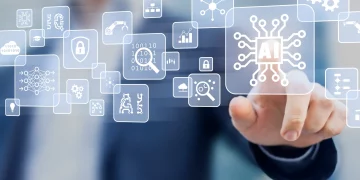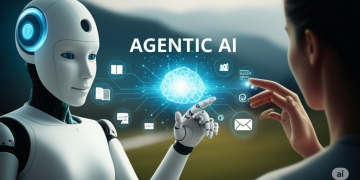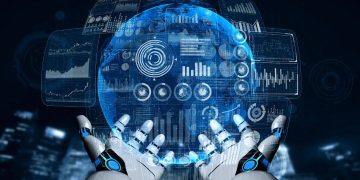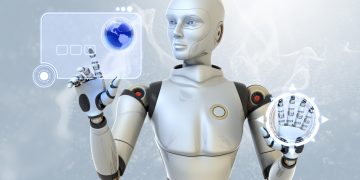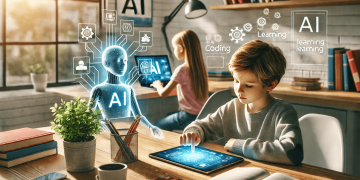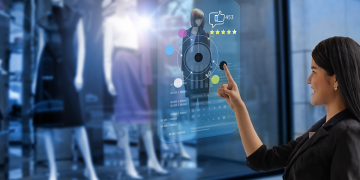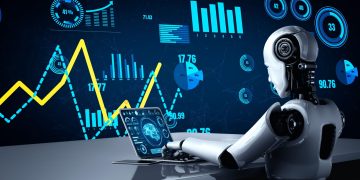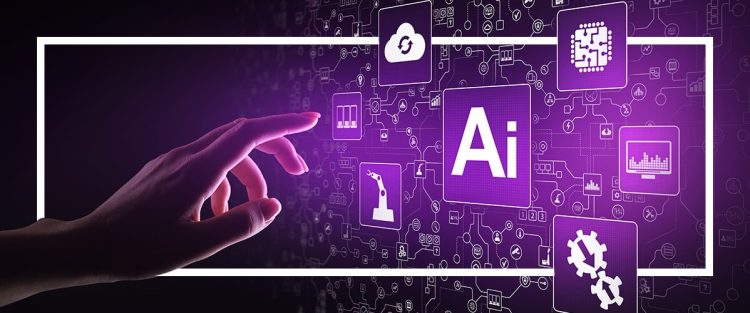In the modern business landscape, data is king. As organizations accumulate vast amounts of data, the ability to make informed, timely decisions based on that data has never been more important. Predictive analytics, powered by artificial intelligence (AI), is transforming how businesses approach decision-making by providing insights that enable companies to forecast trends, optimize operations, and identify new opportunities. AI-driven predictive analytics is revolutionizing industries by enabling more accurate predictions and improving business outcomes across various sectors. This article explores how AI is enhancing predictive analytics and transforming business decision-making.
1. Introduction to Predictive Analytics
Predictive analytics is a branch of data analytics that uses historical data, statistical algorithms, and machine learning techniques to identify the likelihood of future outcomes. Traditionally, businesses relied on historical trends and expert intuition to make decisions. However, as data availability and computing power have increased, businesses now have the opportunity to make predictions based on large datasets, allowing for more accurate and data-driven decision-making.
AI, particularly machine learning (ML) and deep learning, has become integral to predictive analytics, enabling businesses to uncover patterns and trends in data that would have been impossible to identify using traditional methods. By using AI algorithms, businesses can make more accurate forecasts, detect anomalies, and gain insights into customer behavior, market dynamics, and operational efficiency.
2. The Role of AI in Enhancing Predictive Analytics
AI brings several key advantages to predictive analytics, including the ability to process vast amounts of data, detect hidden patterns, and learn from new data. Below are the primary ways AI enhances predictive analytics:
a) Automating Data Processing
AI algorithms, particularly machine learning models, can automatically process large volumes of structured and unstructured data. This capability allows businesses to extract valuable insights from various data sources, such as customer data, sales records, social media activity, and sensor data. Traditional methods of data analysis are time-consuming and often prone to errors, but AI enables businesses to analyze data faster and more accurately.
Machine learning algorithms can also clean and preprocess data, making it easier to identify relevant features and ensure that the data used in predictive models is of high quality. By automating the data processing workflow, AI reduces the time spent on manual tasks and allows businesses to focus on making decisions based on the insights generated.
b) Identifying Patterns and Trends
One of the most powerful aspects of AI-driven predictive analytics is its ability to identify complex patterns and trends in data that would be difficult for humans to recognize. Machine learning models, particularly supervised learning algorithms, can be trained on historical data to detect relationships between different variables and predict future outcomes.
For example, a retail business can use AI to analyze customer purchase history and predict which products are likely to be popular in the coming months. By identifying these patterns, businesses can adjust their inventory and marketing strategies to meet customer demand and optimize sales.
c) Improving Accuracy and Timeliness of Predictions
Traditional predictive analytics models often rely on basic statistical techniques and historical data. However, these models may not always capture the full complexity of the data or account for changing trends and external factors. AI-driven predictive models, on the other hand, use advanced algorithms that can adapt to new data and improve over time. This continuous learning process enables AI models to make more accurate predictions, even in dynamic and unpredictable environments.
Moreover, AI-powered predictive analytics can provide real-time insights, allowing businesses to make timely decisions based on up-to-date information. This is particularly valuable in fast-paced industries, such as finance, where market conditions can change rapidly and businesses must respond quickly to avoid losses.
d) Handling Complex and Big Data
The volume, variety, and velocity of data generated by modern businesses have increased exponentially. Traditional methods of predictive analytics often struggle to handle big data, as they require extensive manual intervention and processing power. AI, particularly deep learning models, can handle large datasets with minimal human involvement.
Deep learning algorithms, such as neural networks, can process unstructured data, such as images, text, and audio, in addition to structured data. This capability allows businesses to gain insights from diverse data sources, such as social media posts, customer reviews, and sensor data from IoT devices, further enriching the predictive analytics process.

3. AI Applications of Predictive Analytics in Business
AI-driven predictive analytics is being applied across various industries, enhancing business decision-making and driving growth. Below are some of the key applications of AI in predictive analytics:
a) Customer Segmentation and Personalization
Businesses use AI-powered predictive analytics to segment customers based on their behavior, preferences, and purchasing habits. By analyzing customer data, AI models can identify distinct customer groups and predict which products or services they are most likely to purchase.
With these insights, businesses can create personalized marketing campaigns that target specific customer segments with tailored messages and offers. For example, an e-commerce platform might recommend products to customers based on their past purchases or browsing history, leading to increased sales and customer satisfaction.
b) Demand Forecasting and Inventory Management
Accurately forecasting demand is critical for businesses to avoid overstocking or understocking products. AI-driven predictive analytics models can forecast future demand based on historical sales data, seasonal trends, and other external factors, such as market conditions and consumer behavior.
By accurately predicting demand, businesses can optimize their inventory management, reducing costs associated with excess stock or stockouts. Retailers, for example, can use AI to determine the optimal amount of inventory to keep on hand, ensuring that products are available when customers need them without tying up valuable resources.
c) Predictive Maintenance in Manufacturing
In the manufacturing sector, AI-powered predictive analytics is used for predictive maintenance, allowing businesses to detect equipment failures before they occur. By analyzing data from sensors and machine performance metrics, AI models can predict when a machine is likely to break down or require maintenance.
This proactive approach to maintenance helps businesses reduce downtime, minimize repair costs, and extend the lifespan of their equipment. AI-driven predictive maintenance is particularly valuable in industries like automotive, aerospace, and industrial manufacturing, where equipment failure can have significant financial consequences.
d) Financial Risk Management
In the financial services industry, AI-driven predictive analytics is used to assess and manage risks, including credit risk, fraud risk, and market risk. By analyzing historical data and identifying patterns in customer behavior, AI models can predict the likelihood of loan defaults, fraudulent transactions, or market downturns.
Financial institutions can use these insights to make more informed lending decisions, detect fraudulent activities in real time, and optimize their investment portfolios. AI-driven predictive analytics also helps businesses identify emerging risks and take preventative actions before they become significant problems.
e) Healthcare and Disease Prediction
In healthcare, AI-driven predictive analytics is being used to forecast disease outbreaks, predict patient outcomes, and optimize treatment plans. By analyzing patient data, including medical histories, test results, and demographic information, AI models can predict the likelihood of a patient developing certain conditions or diseases.
Healthcare providers can use these insights to intervene early and provide personalized treatment plans that improve patient outcomes. Predictive analytics also helps healthcare organizations optimize resource allocation, reduce costs, and improve patient care.
4. Challenges of AI in Predictive Analytics
While AI-driven predictive analytics offers numerous benefits, there are also challenges to its widespread adoption and implementation:
a) Data Quality and Availability
For AI models to make accurate predictions, the quality and availability of data are crucial. Businesses must ensure that their data is clean, complete, and relevant to the task at hand. Poor-quality data can lead to inaccurate predictions, undermining the effectiveness of predictive analytics.
b) Interpretability and Transparency
AI models, particularly deep learning algorithms, can be complex and difficult to interpret. This lack of transparency can be a barrier to adoption, particularly in industries like healthcare and finance, where decision-makers need to understand the reasoning behind predictions to make informed choices.
c) Integration with Existing Systems
Integrating AI-driven predictive analytics into existing business systems can be challenging. Businesses must ensure that their data infrastructure can support AI models and that the models are compatible with their current tools and processes. This may require significant investment in technology and expertise.
5. The Future of AI in Predictive Analytics
The future of AI-driven predictive analytics is bright, with ongoing advancements in machine learning, data processing, and computational power. As AI continues to evolve, businesses can expect even more accurate and actionable insights, leading to improved decision-making and greater operational efficiency.
Some areas of development include:
- Enhanced Real-Time Analytics: AI models will become even more capable of providing real-time insights, allowing businesses to make decisions on the fly.
- Advanced Personalization: AI will enable even more sophisticated personalized experiences for customers, improving marketing effectiveness and customer loyalty.
- AI-Enabled Automation: Predictive analytics will be integrated into automated decision-making systems, allowing businesses to take action automatically based on predicted outcomes.
Conclusion
AI-driven predictive analytics is transforming the way businesses make decisions. By enabling more accurate predictions, uncovering hidden patterns, and automating data processing, AI is helping companies improve efficiency, reduce costs, and uncover new opportunities. As AI technologies continue to advance, the role of predictive analytics in business decision-making will only grow, offering organizations the tools they need to stay ahead of the competition and succeed in an increasingly data-driven world.





